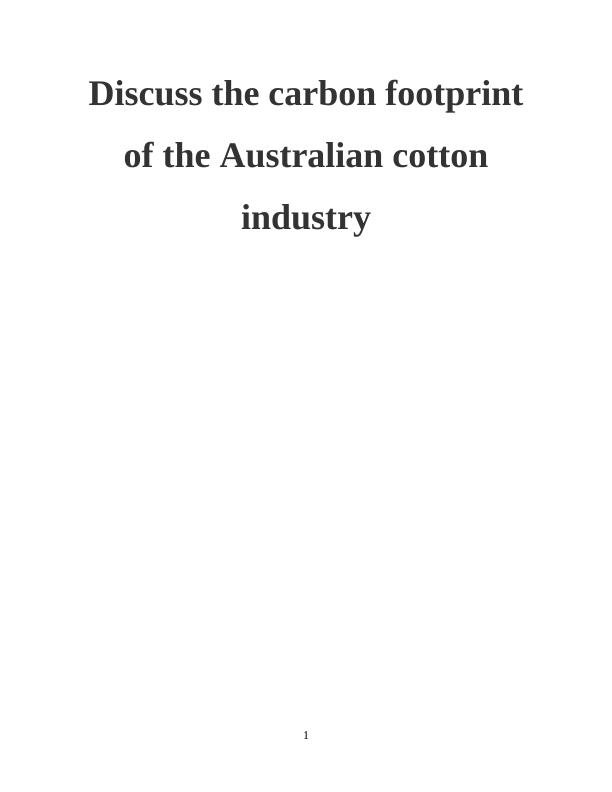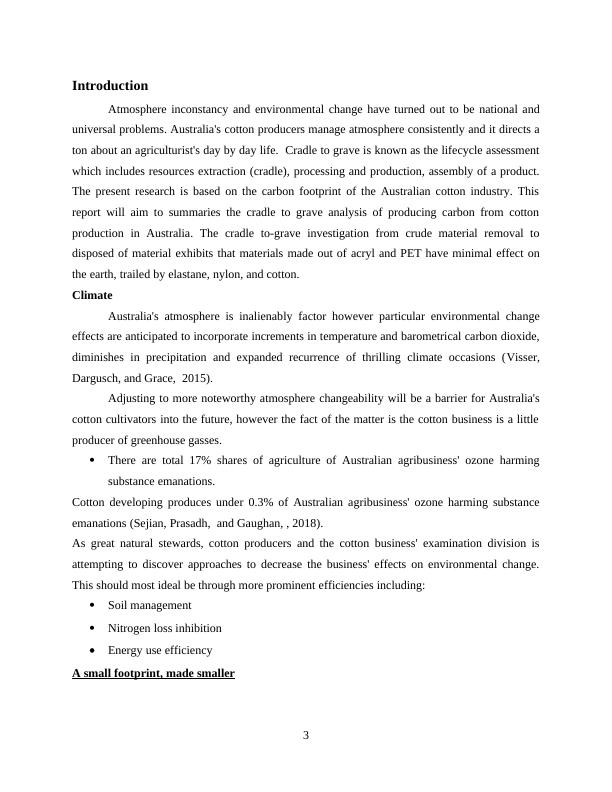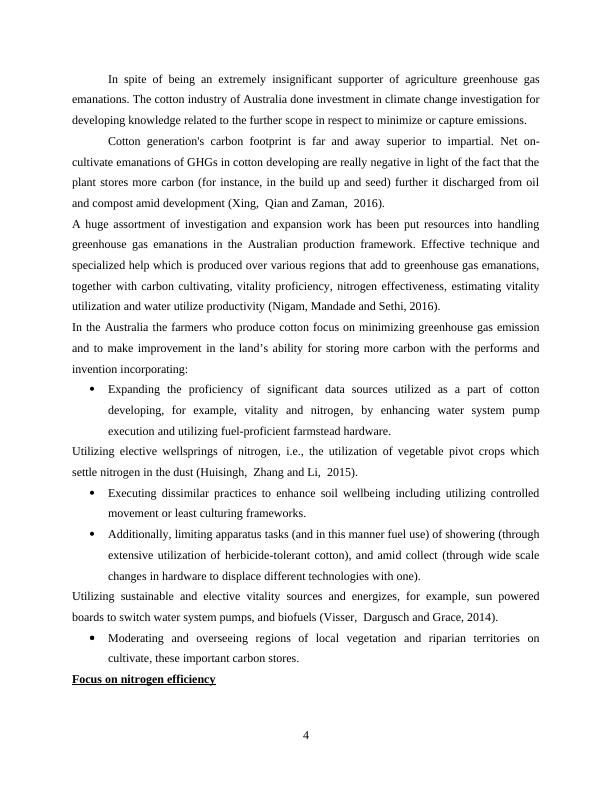Essay on The Carbon Footprint - Australian Cotton Industry
Added on 2020-07-23
15 Pages4487 Words56 Views
Discuss the carbon footprintof the Australian cottonindustry1

Table of ContentsIntroduction......................................................................................................................................3Measuring the footprint..........................................................................................................6Fertilizer emissions.................................................................................................................6Conclusion.....................................................................................................................................13Reference.......................................................................................................................................142

IntroductionAtmosphere inconstancy and environmental change have turned out to be national anduniversal problems. Australia's cotton producers manage atmosphere consistently and it directs aton about an agriculturist's day by day life. Cradle to grave is known as the lifecycle assessmentwhich includes resources extraction (cradle), processing and production, assembly of a product.The present research is based on the carbon footprint of the Australian cotton industry. Thisreport will aim to summaries the cradle to grave analysis of producing carbon from cottonproduction in Australia. The cradle to-grave investigation from crude material removal todisposed of material exhibits that materials made out of acryl and PET have minimal effect onthe earth, trailed by elastane, nylon, and cotton.ClimateAustralia's atmosphere is inalienably factor however particular environmental changeeffects are anticipated to incorporate increments in temperature and barometrical carbon dioxide,diminishes in precipitation and expanded recurrence of thrilling climate occasions (Visser,Dargusch, and Grace, 2015). Adjusting to more noteworthy atmosphere changeability will be a barrier for Australia'scotton cultivators into the future, however the fact of the matter is the cotton business is a littleproducer of greenhouse gasses.There are total 17% shares of agriculture of Australian agribusiness' ozone harmingsubstance emanations. Cotton developing produces under 0.3% of Australian agribusiness' ozone harming substanceemanations (Sejian, Prasadh, and Gaughan, , 2018). As great natural stewards, cotton producers and the cotton business' examination division isattempting to discover approaches to decrease the business' effects on environmental change.This should most ideal be through more prominent efficiencies including:Soil managementNitrogen loss inhibitionEnergy use efficiency A small footprint, made smaller3

In spite of being an extremely insignificant supporter of agriculture greenhouse gasemanations. The cotton industry of Australia done investment in climate change investigation fordeveloping knowledge related to the further scope in respect to minimize or capture emissions. Cotton generation's carbon footprint is far and away superior to impartial. Net on-cultivate emanations of GHGs in cotton developing are really negative in light of the fact that theplant stores more carbon (for instance, in the build up and seed) further it discharged from oiland compost amid development (Xing, Qian and Zaman, 2016).A huge assortment of investigation and expansion work has been put resources into handlinggreenhouse gas emanations in the Australian production framework. Effective technique andspecialized help which is produced over various regions that add to greenhouse gas emanations,together with carbon cultivating, vitality proficiency, nitrogen effectiveness, estimating vitalityutilization and water utilize productivity (Nigam, Mandade and Sethi, 2016).In the Australia the farmers who produce cotton focus on minimizing greenhouse gas emissionand to make improvement in the land’s ability for storing more carbon with the performs andinvention incorporating: Expanding the proficiency of significant data sources utilized as a part of cottondeveloping, for example, vitality and nitrogen, by enhancing water system pumpexecution and utilizing fuel-proficient farmstead hardware.Utilizing elective wellsprings of nitrogen, i.e., the utilization of vegetable pivot crops whichsettle nitrogen in the dust (Huisingh, Zhang and Li, 2015).Executing dissimilar practices to enhance soil wellbeing including utilizing controlledmovement or least culturing frameworks.Additionally, limiting apparatus tasks (and in this manner fuel use) of showering (throughextensive utilization of herbicide-tolerant cotton), and amid collect (through wide scalechanges in hardware to displace different technologies with one). Utilizing sustainable and elective vitality sources and energizes, for example, sun poweredboards to switch water system pumps, and biofuels (Visser, Dargusch and Grace, 2014).Moderating and overseeing regions of local vegetation and riparian territories oncultivate, these important carbon stores. Focus on nitrogen efficiency4

End of preview
Want to access all the pages? Upload your documents or become a member.
Related Documents
Assignment on Environmental Sciencelg...
|7
|1625
|88
Feasibility Study of Solar Energy Infrastructure in Australialg...
|34
|13206
|39
